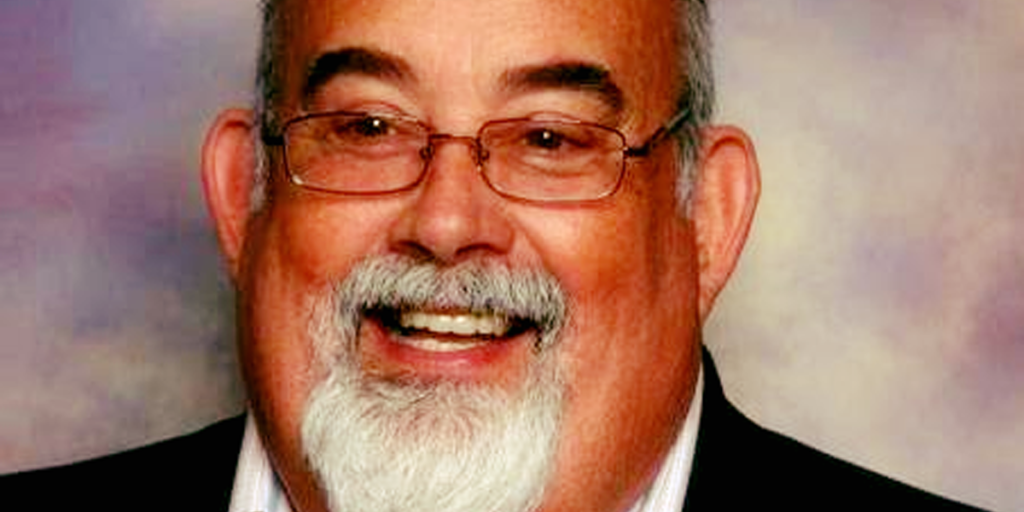From Roseanne to Jim Bonner why don’t people think before they post?

Enough already with the racist, sexist, otherwise insanely offensive social media posts. It’s not funny and in fact it’s down right inexcusable. We need to get past the types of messages and memes that have become common place in recent years. It seems that they’re coming at us from every angle. Here in Alabama we have Public Service Commission candidate Jim Bonner who has come under fire for some of his Facebook posts. To which he has laughed off as simply being a reflection of his sense of humor. For the record, I have a sense of humor and I’m harder to offend than most but even I can tell you that Hitler and the Holocaust are never funny. Nor are jokes about sexual assault and if you need to be told that then there’s no place for you in civil society let alone elected to a statewide board. Then you have Roseanne‘s racist tweet. Which she blamed on taking the sleeping medication ambien. The response by the network to her offensive posts was swift and firm – her recently rebooted show was cancelled. For Rosanne being offensive is part of her brand but even she should have known there are lines you don’t cross and racist remarks are among them. There are a number of “stars” from Bill Mahr to Joy Reid and Whoopie Goldberg who have made a name for themselves by pushing the boundaries of decency. The definition of decency is not politically biased. There are people on both sides who should be shouted down when they say things that are out of bounds. In our day and age the line isn’t even just drawn at offensive we’ve come to accept sentiments that we may not agree with but there’s just parts of offensive behavior that society won’t take. The line shouldn’t depend on intended audience. You’re missing the point if you make this about “Democrats being more offensive than Republicans” or vice-versa. Or to address Bonner again, it’s not enough to say “you have lost your sense of humor if you don’t find this funny.” While, I do genuinely believe that people often misinterpret things or take things too personally, there’s merit to a lot of the content being called out online as of late. There’s also a standard that has been lowered in recent years. President Donald Trump himself challenged the standards of acceptable behavior from a candidate and then after he won from an elected official and while I appreciate his methods of communication I do believe that the change isn’t only positive and the precedent he’s set with his tone have lowered the bar for civil discourse. There should be a higher level of a decorum. A higher standard. People should conduct themselves in a less offensive way. We live in a very polarizing, divisive time right now. We cannot and will not improve that if we do not draw the line, and every single time that someone crosses it (regardless of political affiliation or race) call them out to make then understand that society doesn’t accept what they’re doing or saying. Enough people! Think before you post and if you can’t help yourself you have no business in a position of influence.
Mental Health Awareness Month is ending, but the work continues

For those of you who didn’t know, May is Mental Health Awareness Month. As the month winds down, I’d be remiss not to post about Mental Health Awareness, and how much better we need to do around the nation with education, destigmatization and prioritizing access to affordable mental healthcare. Too often the only time we see people talk about mental health awareness, or mental health in general, is when tragedies such as public violent acts occur (though it’s a misconception that those suffering from mental illness are inevitably going to be violent) or with the suicides of celebrities. Meanwhile, millions all around us are suffering daily. In addition to those who suffer from mental health illness, families are being broken apart and employers are losing productivity, students are failing… there is such a high cost for what has been historically our nation’s inability to recognize and address the mental health crises. The cost of ignoring the problem is so much more significant. Before Mental Health Awareness Month ends, I want to encourage you, the readers of Alabama Today, to get more facts, become more educated and talk about mental health with those around you much more frequently. We don’t need to wait for a crises to strike to address what we can and should be doing. Encourage your lawmakers to adequately fund mental health. Talk to your teachers, educators, school administrators about what they are doing in schools to recognize and possibly intervene with students who may need additional help. People with severe, persistent mental illness can, and do, live active, vibrant lives. They can be, and often are, productive members of our society. Those who often go untreated generally fair far, far worse. We need to do better by acknowledging and educating those around us about the issues. Here are some state and national resources below about mental health: NAMI Alabama: The mission statement/purpose of NAMI Alabama is to provide support, education, and advocacy for persons with mental illnesses, their families, and others whose lives are affected by these brain disorders. This is accomplished by: Educating the people of Alabama about mental illness thereby reducing stigma Providing support for individuals with mental illness to grow and contribute to their community Developing, nurturing and coordinating a statewide network of local affiliates Promoting public policies which expand services and improve treatment for all persons living with a mental illness and supporting research leading to the control and management of mental illness Alabama Department of Mental Health: The state agency tasked with, “Promoting the health and well-being of Alabamians with mental illnesses, developmental disabilities and substance use disorders.” Substance Abuse and Mental Health Services Administration (SAMHSA): The agency within the U.S. Department of Health and Human Services that leads public health efforts to advance the behavioral health of the nation. SAMHSA’s mission is to reduce the impact of substance abuse and mental illness on America’s communities.
Equal pay activist Lilly Ledbetter endorses Joseph Siegelman for AG

Alabama Attorney General-hopeful Joseph Siegelman won the endorsement of the woman who became the face of the women’s equal pay movement in Congress. Lilly Ledbetter, the Alabama-native and namesake of former President Barack Obama‘s first piece of legislation signed into law back in 2009, endorsed the Birmingham civil rights attorney and the son of former Governor Don Siegelman on Wednesday. “Harassment and unequal treatment of women in the workplace violate the core American values of opportunity and equality,” Ledbetter said. “If current trends continue, women in Alabama will not see equal pay until the year 2088. Joseph Siegelman is committed to equal employment rights for women, and he is the candidate we can trust to follow through with enforcing the law.” Ledbetter became a household name during her tireless fight for equal rights in the workplace, starting with her own wage discrimination case against an Alabama company that paid her substantially less than her male counterparts for almost two decades. Her case went to the U.S. Supreme Court, where she lost in a divided decision in 2007. She continued to fight for pay equality in the workplace, and in 2009, the Lilly Ledbetter Fair Pay Act, which extends the deadline in which workers subjected to pay discrimination can recover lost wages, was signed into law. Siegelman said he takes great price in her endorsement. “Lilly Ledbetter’s personal sacrifice in pursuit of justice for women in the workplace has lifted us all up, and Alabama is lucky to call Ms. Ledbetter one of our own. I take great pride in her endorsement, and I promise her and all women in Alabama that I will honor it,” Siegelman said in a statement. Siegelman announced, in conjunction with his acceptance of Ms. Ledbetter’s endorsement, a slate of policies directed at equal employment rights for women. Ledbetter is Siegelman’s latest of many endorsements. He’s previously received endorsements from the Alabama New South Alliance, the Lee County and Bullock County Voters League, the Democratic Women of Barbour County, several unions, including the Communications Workers, the Mine Workers, Electrical Workers, Pipefitters, the Central Alabama Labor Federation and the Alabama Building and Construction Trades.
UA professor Dr. Andrew Lemmon receives $500K for US Navy research

A University of Alabama professor has received half a million dollars from a U.S. Navy award in hopes of advancing the future of Naval ships. Dr. Andrew Lemmon, UA assistant professor of electrical and computer engineering, is one of 31 recipients of the prestigious 2018 Young Investigator Program (YIP) from the Office of Naval Research (ONR). Awards were given to those whose research holds strong promise across a wide range of naval-relevant science and technology areas. “To meet the demand signal from the 2018 National Defense Strategy, we must attract the best and brightest minds to work on naval warfighting challenges. The Young Investigator Program does just that, and I’m honored to announce the recipients for 2018,” said Chief of Naval Research Rear Adm. David Hahn. “Since 1985, this program has attracted outstanding scientists and engineers from across academia to support our Navy and Marine Corps, and as we return to an era of great power competition, that is more important than ever before.” The YIP is a highly competitive process, rewarding the achievements made by young faculty members. This year’s candidates were selected amongst more than 340 highly qualified applicants based on past performance, technical merit, potential for scientific breakthrough and long-term university commitment. All are college and university faculty who have obtained tenure-track positions within the past five years. Lemmon will receive the $500,000 over the course of three years. “It’s obviously a huge honor, and I feel very fortunate to have received this award,” Lemmon said. Introduced in 1985, the ONR YIP is one of the nation’s oldest and most selective science and technology basic research programs. Its purpose is to fund early-career academic researchers-called investigators-whose scientific pursuits show outstanding promise for supporting the Department of Defense, while also promoting their professional development. Lemmon is the first faculty member at UA to receive the YIP award since its inception. “We are very proud of Dr. Lemmon for receiving an ONR Young Investigator Award,” said Dr. Charles Karr, dean of UA’s College of Engineering. “This is a very prestigious award, but one that is well deserved. We are excited about the work Andy does for the Navy.” According to UA, Lemmon’s research in power electronics is expected to contribute to closing known technology gaps in the Navy’s current 30-year ship building plan. This long-term plan includes a shift toward electric propulsion for some types of U.S. Navy ships, which requires moving to a new power architecture called the Integrated Power System. IPS will enable ship propulsion and other loads to be powered from a common system in order to reduce the total amount of power required. This system has been in development for several years, and it is where Lemmon’s research ties in. His research team is working with a new generation of high voltage semiconductors made from silicon carbide, or SiC, which is a key enabling technology for future large-scale IPS implementations. The goal of Lemmon’s YIP program is to help the Navy understand and resolve the challenge of electromagnetic interference, or EMI, in systems designed with SiC. “This is a major challenge, and we can’t yet solve it completely, but we are discovering methods to drastically reduce the amount of electromagnetic interference that is emitted by these devices,” Lemmon explained.
State crash data shows seat belt use critical in saving lives

By: Adam Jones | Communications Specialist Senior/Research at the University of Alabama Those involved in auto crashes while not wearing seat belts are 40 times more likely to die than those who buckle up, according to an analysis of state crash records from the past five years. For the study, University of Alabama researchers at the Center for Advanced Public Safety examined crash records from 2013 through 2017 provided by the Alabama Law Enforcement Agency, or ALEA. Crash records showed about one out of every 25 unrestrained motorists involved in a crash will suffer a fatal injury, but only about one out of every 1,000 restrained motorists involved in a crash will have a fatal injury. This means that people are 40 times more likely to be killed without restraints. One reason for this is those ejected from vehicles during crashes have 50 times the death rate as those who remain in the vehicles, and the probability of being thrown from vehicles increases about 337 times for those not restrained. “There is no doubt that seat belts are the most effective way of reducing the chances of getting killed in a crash,” said Dr. David Brown, a research associate at CAPS who led the study. “The chances of avoiding a crash altogether that involves injury over your driving lifetime is very low, so these are not just hypothetical or extreme examples. They are real life-and-death probabilities.” Along with an increased chance of dying in a crash if unrestrained, there is an increased chance of serious injury. About one in seven unrestrained motorists involved in a crash will sustain a serious injury, while only about one in 50 properly restrained motorists will have a serious injury. The chances of serious injury for those unrestrained increase by more than a factor of seven. For those who buckle up, nine out of 10 are not injured during a crash. Some of the other interesting factors include driver and passenger demographics and other correlations: Those between the ages 17 and 36 are unrestrained significantly more than average. Males are about twice as likely to be unrestrained as females. If all back-seat occupants were properly restrained, it would result in an estimated saving of 62 lives per year in Alabama. Unrestrained drivers are about 2.5 times more likely to have their crashes in the rural areas than in the cities. Brown said there are many things drivers should do to prevent severe traffic crashes in addition to the use of seatbelts. They include, in the order of ability to prevent fatal crashes: Slowing down, as the probability of fatality doubles for every 10 mph increase. Pulling over to a safe stopping point until distractions, such as cell phones, are resolved. Never driving or riding with anyone who has had any alcohol or who has taken any mind-altering drugs, even if prescribed. Anticipating and avoiding bad weather, especially when coupled with darkness. Watching for deer if traveling just after dark and slowing down. Driving defensively to reduce risk by putting distance between others vehicles, staying out of the blind spots of large trucks and letting aggressive drivers pass. This article as first published on the University of Alabama website.
Personnel note: Robyn Hyden named Executive Director of Alabama Arise

Alabama Arise — a nonprofit, nonpartisan coalition of congregations, organizations and individuals promoting public policies to improve the lives of low-income Alabamians — on Wednesday announced Robyn Hyden would be its new Executive Director. Hyden will replace Kimble Forrister, who is retiring next month after 27 years as the organization’s Executive Director. She will join Arise from the United Way of Central Alabama, where she has served as director of grants management in the Department of Community Initiatives since 2017. Previously, Hyden worked as a North Alabama organizer for Arise and directed development and communications efforts at the Birmingham-based nonprofits Urban Ministry and Alabama Possible. She holds a Bachelor of Arts degree in anthropology from Vanderbilt University. Arise Board President Cindy Lowry praised Hyden’s track record in fundraising and organizing and touted her relationships with civic organizations and faith-based groups across Alabama. “Robyn has what we believe to be the right attributes – passion, commitment and professionalism – to lead this organization into the future,” said Lowry. “As a former organizer for Arise, she knows the organization very well and has a vision that will build on our history and strengths. Through her words and actions, we know she is fully committed to Arise and our mission.” “Alabama Arise’s members are our state’s most outspoken advocates for dignity, justice and power for people in poverty,” Hyden said. “Arise is at the forefront of organizing grassroots advocacy, holding elected officials accountable and producing trusted policy analysis – work that is now more important than ever. I am honored and humbled to carry this work forward with Arise’s amazing staff, members and board.” Forrister, Arise’s outgoing director, also offered praise for Hyden. “Robyn brings just what Arise needs: a vision for where we need to go, a vision grounded in deep relationships with a network of change-makers,” Forrister added. “She’s a collaborator. She listens. And she’s thoughtful. She steps in at a time when our staff, board and membership are strong and eager to engage the issues of 2019.” Hyden, a native of Alabama is known for her strong connections and relationships with a variety of organizations across the state, ranging from civic groups to faith-based and social justice organizations. She said she is honored to accept the position. “Alabama Arise’s members are our state’s most outspoken advocates for dignity, justice and power for people in poverty,” Hyden said. “Arise is at the forefront of organizing grassroots advocacy, holding elected officials accountable and producing trusted policy analysis – work that is now more important than ever. I am honored and humbled to carry this work forward with Arise’s amazing staff, members and board.
Allegiant Air buys its first Alabama-built jet

A budget airline serving destinations across the United States bought its first Alabama-built A320 last Tuesday. A team of Allegiant Air employees and executives from the company’s headquarters in Las Vegas joined Airbus’ leadership team at the Airbus U.S. Manufacturing Facility in Mobile, Ala. for a special ceremony to officially mark the delivery of the aircraft. Allegiant Air is currently transitioning to an all-Airbus fleet — the aircraft was the the 11th of 13 new A320 aircraft scheduled for purchase directly from Airbus, to be inducted into Allegiant’s fleet this year. Previously inducted aircraft have been assembled in Airbus facilities in Toulouse, France and Hamburg, Germany. “It’s exciting to see the progress we’ve made in our transition to an all-Airbus fleet, and gratifying to be able to celebrate this special milestone with team members whose hard work and dedication have made it possible,” said Maury Gallagher, Allegiant president and CEO. “Operating a single fleet type will increase efficiency in teams across the company – including training, scheduling, and maintenance – while bringing economic benefits like greater fuel efficiency and additional seat capacity. Since we began, Allegiant has flown more than 80 million passengers, and our transition to a streamlined fleet will allow us to continue offering increasingly reliable, convenient travel at industry-low fares to our next 80 million.” Allegiant currently has a total of 99 Airbus aircraft either in service or committed for future delivery. “Airbus is committed to developing and producing fuel-efficient, passenger-friendly aircraft that are leaders in the evolving airline marketplace,” added Bob Lekites, Executive Vice President-Customers, Airbus Americas. “Our partnership with Allegiant Air, coupled with our commitment to producing innovative aircraft, has allowed Allegiant to expand their ultra-low cost consumer flight options. We are proud to deliver Allegiant their first Airbus aircraft manufactured in Mobile, and we look forward to providing them more aircraft that exceed customer expectations.”
Parker Snider: State elections matter more than most think

Washington, D.C.—one of the most visited cities in the world—oozes a sense of superiority and power. How could it not? Our nation’s Capitol building is truly enormous, the Secret Service and Capitol police carry rifles regularly, and the President of the most powerful country in the world lives within its borders. Anyone, whether a visitor, summer intern, or permanent resident, feels that they are amongst the most formidable and important people in the world when in Washington. This sentiment is mostly true. The President, Congress, and Supreme Court do yield great authority and power to influence our lives—if they choose to use it. The truth, however, is that state governments are more likely than the federal government to create laws and policies that affect our day-to-day lives. This is, in fact, how our country was designed. James Madison, a founding father and our fourth President, wrote in Federalist No. 45 that “the operations of the federal government will be most extensive and important in times of war and danger; those of the State governments, in times of peace and security.” In layman’s terms: the federal government will protect our national security and borders while the states dictate domestic policy. Admittedly, Madison’s vision of federalism is not exactly what we see today, as the federal government often rules like it is “most extensive and important” in both peacetime and wartime. Even so, the 10th amendment of the Constitution remains, and all powers not delegated to the federal government are constitutionally reserved to the states. Although the federal government finds itself at a standstill arguing about all types of domestic policy, state governments are productively creating them every day. Take, for instance, the Alabama legislature. In the first three months of 2018, the Alabama State House and Senate passed over 300 bills. The U.S. Congress, with all its power and superiority, has passed only 172 bills since the beginning of last year. This gap is even more pronounced when examined nationally. In 2014 alone state legislatures passed over 24,000 bills. The 113th Congress, by contrast, passed only 296 bills in both 2013 and 2014. This productivity gap is largely because, unlike in Washington, many states have supermajorities of a singular political party. This makes it immensely easier to pass legislation in the states. These laws, although restricted to a single state, are not limited to minor issues. During the Obama administration, for example, states enacted over 200 restrictions on abortion. State governments are also in charge of public education, determine how to tax their residents, and decide infrastructure spending—spending that could easily impact your daily commute. State governments also recruit businesses and jobs to the area, determine many welfare benefits and qualifications, regulate occupations (for better or for worse), and draw their own district lines. The reality is that the actions of the state government can have immediate and consequential effects on our everyday lives. This makes it critically important to know the candidates we are voting for in state elections. The days of the national media covering Alabama politics constantly are, for the moment, over. Fox News and CNN aren’t reporting on our governor’s race like they did last year’s race for U.S. Senate—and they certainly are not following our races for lieutenant governor, attorney general, or those of other down ballot positions. Alabamians, therefore, must intentionally learn about the candidates, their records, and their positions. Thankfully, there are ample opportunities to do so including recorded debates, coverage by local news organizations, and detailed policy questionnaires. On June 5th, Alabamians will vote. When we do, we must not vote blindly based off name recognition or slick advertising. We should, instead, learn about candidates up and down the ballot because state elections matter more than most think. ••• Parker Snider is Policy Relations Manager for the Alabama Policy Institute (API). API is an independent, nonpartisan, nonprofit research and educational organization dedicated to strengthening free enterprise, defending limited government, and championing strong families. If you would like to speak with the author, please e-mail communications@alabamapolicy.org or call (205) 870-9900.
Both sides preparing as if U.S. – North Korea summit is a go

Rapid-fire diplomacy played out on two continents in advance of an “expected” summit between President Donald Trump and North Korea’s Kim Jong Un, the strengthening resolve coming after a series of high-risk, high-reward gambits by the two leaders. Officials wouldn’t say that the June 12 Singapore summit was back on, but preparations on both sides of the Pacific proceeded as if it were. Two weeks of hard-nosed negotiating, including a communications blackout by the North and a public cancellation by the U.S., appeared to be paying off as the two sides engaged in their most substantive talks to date about the meeting. Trump tweeted Tuesday that he had a “great team” working on the summit, confirming that top North Korean official Kim Yong Chol was headed to New York for talks with Secretary of State Mike Pompeo. In addition, teams of U.S. officials have arrived at the Korean Demilitarized Zone and in Singapore to prepare for the meeting. “Solid response to my letter, thank you!” tweeted Trump. He announced he had decided to “terminate” the summit last week in an open letter to Kim that stressed American military might, but also left the door cracked for future communication. White House officials characterized the letter as a negotiating tactic, designed to bring the North back to the table after a provocative statement, skipped planning talks and ignored phone calls. But aides almost immediately suggested the meeting could still get back on track. And after a suitably conciliatory statement from North Korea, Trump said the same. White House press secretary Sarah Huckabee Sanders said that since the letter, “the North Koreans have been engaging” with the U.S. Trump views the meeting as a legacy-defining opportunity to make the nuclear deal that has evaded others, but he pledged to walk away from the meeting if he believed the North wasn’t serious about discussing dismantling its nuclear program. U.S. officials cast the on-again, off-again drama as in keeping with Trump’s deal-making style, and reflective of the technically still-warring leaders testing each other. In his book “The Art of the Deal,” Trump wrote: “The worst thing you can possibly do in a deal is seem desperate to make it. That makes the other guy smell blood, and then you’re dead. The best thing you can do is deal from strength, and leverage is the biggest strength you can have.” After the North’s combative statements, there was debate inside the Trump administration about whether it marked a real turn to belligerence or a feint to see how far Kim Jong Un could push the U.S. in the lead-up to the talks. Trump had mused that Kim’s “attitude” had changed after the North Korean’s surprise visit to China two weeks ago, suggesting China was pushing Kim away from the table. Trump’s letter, the aides said, was designed to pressure the North on the international stage for appearing to have cold feet. White House officials maintain that Trump was hopeful the North was merely negotiating but that he was prepared for the letter to mark the end of the two-month flirtation. Instead, the officials said, it brought both sides to the table with increasing seriousness, as they work through myriad logistical and policy decisions to keep June 12 a viable option for the summit. The flurry of diplomatic activity intensified with Kim Yong Chol’s appearance at the Beijing airport Wednesday. South Korea-based Yonhap News cited diplomatic sources as saying Kim was on an Air China flight that departed in the afternoon, and U.S. officials familiar with planning have said he was scheduled to meet with Secretary of State Mike Pompeo on Thursday. Kim is a former military intelligence chief and now a vice chairman of the North Korean ruling party’s central committee. He will be the highest-level North Korean official to travel to the United States since 2000, when late National Defense Commission First Vice Chairman Jo Myong Rok visited Washington, South Korea’s Unification Ministry said. Pompeo has traveled to Pyongyang, North Korea’s capital, twice in recent weeks for meetings with North Korean leader Kim Jong Un, and has said there is a “shared understanding” between the two sides about what they hope to achieve. Meanwhile, a team of American diplomats is holding preparatory discussions with North Korean officials at the DMZ. The group first met with its counterparts Sunday, and was seen leaving a Seoul hotel on Tuesday, but it was unclear whether they went to Panmunjom, a village that straddles the border inside the DMZ. The U.S. officials are led by Sung Kim, the U.S. ambassador to the Philippines, who formerly was the U.S. ambassador to Seoul and a top negotiator with North Korea in past nuclear talks. It includes senior officials with the National Security Council and the Pentagon. The White House emphasized that it has remained in close contact with South Korean and Japanese officials as preparations for the talks continue. Sanders said Trump will host Japanese Prime Minister Shinzo Abe of Japan on June 7 to coordinate their thinking ahead of the summit. Trump hosted South Korean President Moon Jae-in last week. Moon, who has lobbied hard for nuclear negotiations between Trump and Kim Jong Un, held a surprise meeting with the North Korean leader Saturday in an effort to keep the summit alive. South Korean media also reported that a North Korean delegation arrived in Singapore on Monday night, where other U.S. officials, led by White House deputy chief of staff Joe Hagin, are preparing for the summit. Republished with the permission of the Associated Press.
Daniel Sutter: The End of the Allentown Economy

A Remarkably Prescient Song Over 35 years ago during the 1981-82 recession, Billy Joel released “Allentown” about the plight of this Pennsylvania town. The song resonated across the Midwest during the worst economic downturn since the Great Depression. It also anticipated, I think, an important change in our economy and society. I was in high school in suburban Detroit when “Allentown,” and Mr. Joel could easily have been singing about our troubles. Unemployment in Pennsylvania topped out at 12.7 percent in the recession, while Michigan hit 16.4 percent. Something seemed fundamentally wrong. Fortunately, the U.S. economy recovered, and growth exceeded 7 percent in 1984. President Reagan’s reelection slogan, “It’s morning in America” suggested that the dark days were behind us. His tax cuts and low inflation were beginning to unleash the Reagan-Clinton prosperity. Prosperity never brought back all the auto, steel, or coal jobs. The causes were many, but the largest was automation. America manufactures as much as ever, just with many fewer workers than in the 1970s. Now artificial intelligence (AI) may automate 800 million jobs worldwide. Sources of long term, stable employment are vanishing, and AI will accelerate the automation of routinized tasks. In the future, tasks may be automated before hundreds of thousands of workers are hired to do them. This does not mean the end of work, because our wants and desires for goods and services exceed our productive capacity, and always will. Our households and businesses inevitably have tasks that we’d like done. Humans will be useful, only our jobs will be more fleeting. “Allentown” foreshadows the social impact of these changes. The lyrics state: “For the Pennsylvania we never found, For the promises our teachers gave, If we worked hard, If we behaved.” These words reflect an implicit deal: follow directions from teachers (and I would add parents and bosses), and you will be taken care of. I shouldn’t really say taken care of, because the lyrics also mention hard work. Hard work in coal mines, steel mills, and auto plants and helped create the prosperity which workers shared. The middle class, post-War America lifestyle wasn’t a gift from employers, unions, or the government, but a share of the wealth created. This deal worked because many jobs required on-the-job training but little specific expertise. The skills of a high school graduate sufficed, if people followed the boss’ directions. The gig economy and freelance writer epitomize today’s workplace, and now more people must manage their “careers.” Americans waiting to be told where to go to work hard are struggling in a changing world. Is anyone responsible for this change? Not really, just as no one designed the prior deal. Economist Adam Smith recognized the existence of spontaneous order in society; our institutions are often the product of human action but not design. The Industrial Revolution’s factories, railroads, and other industries needed workers, and economic and political freedom in England and America meant that people could not be forced into this work. A deal where owners and managers designed the workplaces and marketed the products while employees followed directions made all involved better off. The old deal is not being shut down by law, and traditional employment will never disappear entirely. One consequence of the ongoing spontaneous change is no official announcement that the old deal is no longer in effect. This probably worsens disillusionment and pain, as a long-successful way of approaching life just isn’t very successful anymore. President Trump’s proposed tariffs on steel and other imports are a response, I think, to this larger change. We can expect other actions as well, perhaps regulations to slow the introduction of self-driving vehicles to protect jobs. Tariffs and regulations, however, will likely be merely delaying actions. The good news is that automation will allow us to produce the goods and services we now have, plus many more. And many Americans are embracing freelance careers, perhaps because obeying the boss is often frustrating. The future is bright but will be different, and we must recognize the differences. ### Daniel Sutter is the Charles G. Koch Professor of Economics with the Manuel H. Johnson Center for Political Economy at Troy University and host of Econversations on TrojanVision. The opinions expressed in this column are the author’s and do not necessarily reflect the views of Troy University.
ALGOP censures PSC candidate James Bonner for questionable social media posts, interviews

Terry Lathan, and the Alabama Republican Party are having none of it. The ALGOP Chairwoman issued a statement on Tuesday night, condemning and censuring Public Service Commissioner Place 1 candidate, James “Jim” Bonner‘s opinions, expressed on his radio show, and on social media. “The Alabama Republican Party Candidate Committee voted unanimously to publicly censure and strongly condemn Mr. Jim Bonner, candidate for Public Service Commission, Place 1,” said Lathan in the release. “Mr. Bonner’s recent comments on his social media as well as radio shows are not condoned by the Alabama Republican Party. Mr. Bonner is welcome to his opinions and his first amendment right of free speech. The Alabama Republican Party is welcome to our opinion as well, and we reject the egregious comments Mr. Bonner continues to spew.” “Furthermore, the ALGOP Candidate Committee unanimously urges Republican voters in the June 5 primary to NOT cast votes for Jim Bonner for the Public Service Commission, Place 1.” Bonner has been under constant criticism for a series of “questionable” posts on social media calling him anti-Semitic and racist. “In post after post, Bonner seems to revel in racist, sexist and anti-semite comments, but this has dampened his support among those who think he is someone he’s not,” wrote APR. Despite all of this, Bonner is doing fairly well in polls, particularly in Mobile and surrounding areas. He shares a last name with retired Congressman Jo Bonner, and because of the popularity of the Bonner family name, Jim Bonner is seeing some success. Bonner faces off against Jeremy Oden in the June 5 primary.
Hyundai to invest $388 million to prep Alabama plant for next-generation engines

Gov. Kay Ivey joined Hyundai Motor Manufacturing Alabama LLC President and CEO Dong Ryeol Choi today to announce that Hyundai is investing $388 million to construct a plant dedicated to manufacturing engine heads and enhance existing operations to support production of new models of Sonata and Elantra sedans. The investment will create 50 new jobs at the automaker’s Montgomery manufacturing complex. Hyundai Motor Manufacturing Alabama (HMMA) is preparing for the next-generation Theta III engine, which requires new technologies and components as a part of its assembly process. Nearly all of the capital investment will be spent on equipment for the engine head machining plant, including updating technology. “Hyundai is an important member of Alabama’s dynamic auto industry, and this expansion at its Montgomery manufacturing facility will power the global automaker’s drive for future growth in the U.S.,” Ivey said. “Hyundai’s significant new investment is a strong testament to the company’s confidence in its Alabama operation and in its highly skilled workforce.” Track record “With our latest expansion, HMMA continues to show its strong commitment to the people of Montgomery and the people of Alabama,” Hyundai President and CEO Dong Ryeol Choi said at today’s announcement. “Hyundai is continuing its track record of investing in new manufacturing technologies to ensure the long-term success of our only U.S. assembly plant,” he added. Hyundai said it will cost approximately $40 million to construct the 260,000-square-foot building that will house the head machining equipment. Construction on the engine head machining plant is scheduled for completion in November. The project will free up space to expand engine assembly lines in HMMA’s two existing engine plants. HMMA will begin producing the Theta III engine in April 2019 for Sonata sedans and Santa Fe crossover utility vehicles. HMMA will continue to build the 2.0 liter Nu engine for Elantra sedans at its manufacturing facility in Montgomery. The engine plants produce approximately 700,000 engines per year to support vehicle production at both HMMA and Kia Motors Manufacturing Georgia in West Point, Georgia. In March 2017, HMMA marked the production of its 5 millionth Alabama-made engine. “Over the past 13 years, Hyundai’s Alabama assembly plant has solidified a reputation as one of the industry’s most innovative and productive manufacturing centers,” said Greg Canfield, secretary of the Alabama Department of Commerce. “Hyundai’s investment to prepare the Montgomery facility for next-generation engines underscores the strength of the alliance we have formed with the automaker and sets the stage for continued growth in this mutually beneficial relationship.” Longstanding partnership HMMA, which started vehicle production in May 2005, is the River Region’s largest private manufacturer with 2,700 full-time and 500 part-time employees. “We are so very honored that Hyundai has once again chosen to significantly invest in Hyundai Motor Manufacturing Alabama,” said Judge Charles Price, 2018 chairman of the Montgomery Area Chamber of Commerce. “As home to Hyundai’s only North American manufacturing facility, the Montgomery community pledges to continue our enormously successful 16-year partnership for this new expansion and beyond.” Hyundai has made a series of large investments to expand operations at the Montgomery facility since 2000, when the plant was first announced. In 2007, the automaker added 522 jobs with a $270 million investment at the factory, and in 2011, it created 214 jobs with a $173 million project, according to Alabama Department of Commerce records. It re-launched Santa Fe production with a $52 million project in 2016. Republished with the permission of the Alabama Newscenter.


